Matador Network's Blog, page 1093
May 20, 2019
Map of single-use plastic bans

The plastic waste trashing our oceans and filling landfills across the world has attracted much global attention of late. With stories of plastic washing up on beaches and plastic bags reaching the deepest depths of the ocean, consumers and travelers need a better understanding of how to avoid using plastic.
We all want to be part of the solution, and travel company Orbitz is helping that cause with this new map of places that have banned single-use plastics. Going state-by-state, the map lists cities, hotels, and other established entities that have banned disposable plastics in an effort to help travelers make decisions on the places and businesses to support during their journeys.
“You don’t have to sacrifice sustainability just because you’re on vacation,” Orbitz Brand Director Carey Malloy said in an interview published by Thrillist. “Even if you are traveling to a destination without a ban on plastic bags or straws, you still have the option to help reduce waste. Las Vegas is a great example of a destination with many hotels committed to waste reduction even without a city-wide ban.”
A few notable trends stand out on the map. For example, a look at the Nevada section makes clear that many of the hotels on the Las Vegas strip have ditched single-use plastics. Several beach towns have done the same since they’re among the places most likely to experience the waste firsthand when plastic trash washes up on their shores.
Despite the massive leap backward in progressive federal policies over the past two years, our nation’s capital has actually banned both plastic straws and plastic bags. We still have a long way to go, but this map is proof that positive changes are afoot in the travel community. 
H/T: Thrillist

More like this: Capri will fine tourists $560 for bringing single-use plastics on the island
The post This map shows everywhere single-use plastics are banned appeared first on Matador Network.

Scratching salon opens in Croatia

The saying “an itch you can’t scratch” has finally met its match. Literally. In the Croatian capital of Zagreb, you can go to an actual “scratching salon,” where you’ll relax to the soothing sensation of a full-body scratching.
This month, Češkaonica, which translates to “the scratching salon” in English, opened to the public, promising to put an end to that pesky sensation — targeting those spots you can’t quite reach, and really anywhere else where you need a good scrape.
Patients can opt for a full or partial body scratch, selecting from a range of scratching instruments before being led to a private massage table. The experience is meant to be both relaxing and satisfying, easing tension throughout the body and helping patients to take a load off.
“Some clients even fall asleep, as it is so relaxing,” the salon’s owner, Ana Paradi, told Lonely Planet. According to Paradi, the nail treatment is the most popular, with nearly 90 percent of her patients opting to have fingernails dragged across their bodies. Other popular choices for scratch administration include sticks and even feathers for those who can tolerate a good tickle.
“I got this idea for a scratching parlour because I was always the one looking for kind, long-nailed souls to scratch me,” Paradi said.
A half-hour scratch treatment costs about $12, while a full hour will run you about $15. Bookings fill up on a daily basis, so if you’re in the area and looking for a good scratch, visit the salon on Avenija Dubrava in eastern Zagreb for a walk-in appointment. If you have long fingernails and a weird rasping fetish, the salon is also looking to hire scratchers to meet the increasing demand. 
H/T: Lonely Planet

More like this: This new spiral walkway in a Danish forest lets you walk above the trees
The post You can now visit a ‘scratching salon’ in Zagreb, Croatia appeared first on Matador Network.

The Big 7 sexiest accents survey

The United States is a country of accents and dialects. You likely have one, whether or not you even recognize that it’s there. And this accent sends all kinds of signals to those with whom you communicate. One of those signals is sexiness.
You might be confident in your ability to woo potential romantic partners, but your accent might be what actually casts the magic spell. Travel company Big 7 conducted a survey to determine which US accent is the most seductive, ranking 50 regional dictions. The brand polled over 1.5 million social media users, and the results are wicked smaht.
Bostonians may never have figured out how to pronounce the letter “R,” but their accent still swooned its way to the number two spot. “Bostonian” was topped only by “Texan,” as a good Southern drawl is apparently among the sexiest traits a person can possess. Californians came in at number 10.
Some top-ranked accents aren’t as renowned as the Texan drawl, however. Cleveland’s accent, with those nasal-y A’s and rapid-fire O’s, came in 23rd. Virginia Piedmont, whatever that is, came in at 19th.
Outside of Boston, the East Coast did not fare well. Numbers 49 and 50 were held by New Jersey and Long Island, respectively. Minnesota, home to one of the most distinct accents in the country, also ranked low, coming in at number 48. The “General American” accent, perhaps most known for ordering a “Bud-Weis-Er,” ranked 32nd. 
H/T: Lonely Planet

More like this: This infographic reveals what your UK accent says about you
The post These are the sexiest accents in the United States appeared first on Matador Network.

Best ski resorts for mountain biking
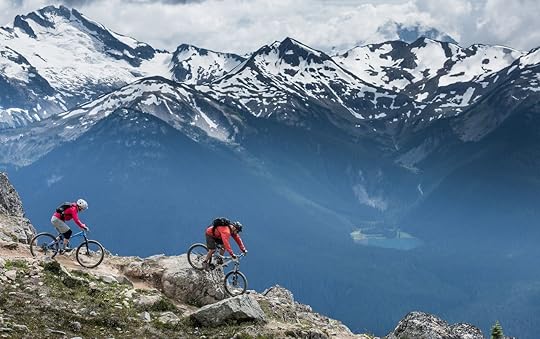
Just because the snow is melting doesn’t mean the chairlifts stop running. Bike parks are popping up at mountain resorts across the US and Canada, and you don’t have to be an expert to ride them. A good mountain bike park offers both downhill trails that challenge your technical skills and cross-country trails that test your endurance. If the park crew mixes in a collection of berms, bumps, and trestles, that’s a recipe for pure success. You can find solid bike parks at ski resorts across the country, but these are the best parks in North America to build your trips around this summer.
1. Trestle Bike Park — Winter Park, Colorado

Photo: Trestle Bike Park/Facebook
A native Coloradan will tell you that despite its name, Winter Park is actually more awesome in the summer, and the primary reason is the resort’s epic Trestle Bike Park. This is the place to experience downhill riding in its big-league form — a procession of pro riders, a massive trail system, and drop-ins from nearly 11,000 feet are all on display. Winter Park has streamlined the resort downhill experience better than any ski area in the United States. While most resorts only open one, maybe two, lifts in the summer, Winter Park offers 50 runs accessed by three separate lifts.
You may be intimidated when you arrive at the parking lot, which is likely to be lined with seasoned bikers in full downhill gear completing last-minute tunes or spraying down their tires while the rapid-fire rhythm of hard rock music ricochets off the surrounding peaks. A look at the trail map won’t do much to settle your nerves, as the park is lined with expert terrain. But there are also several mellow cruisers and family-friendly trails where your crew can ride in succession. If butterflies do overtake your stomach, the best way to pop your bubble of inferiority is to get advice from the locals. You’re in the mountains, after all. People are friendly here even when their helmets are on, and most riders will be stoked to share their advice for the perfect day on the hill.
Another cool thing to do at Winter Park is to bring your camera and watch the sponsored riders rip down Banana Peel, among the most technical and physically demanding downhill tracks in the country. Unless you’re on their level, you’re actually relegated to the sidelines of the pro line because in order to ride it you have to take an orientation class, sign a liability waiver, and promise that you’re as good as you say you are. Otherwise, you won’t get past the drop-in.
Season dates: Daily lift service June 15-September 29
2. Whistler Mountain Bike Park — Whistler, British Columbia, Canada

Photo: SimonaKoz/Shutterstock
Like the ski resort itself, Whistler Mountain Bike Park is huge. A trip here necessitates no fewer than three days on the mountain, and the 2018 opening of the Creek Zone and Creekside Gondola for summer use added three intermediate trails and an expert-level Delayed Fuse singletrack to the resort’s already sizable destination bike park.
Your first must-do is the Top of the World Trail in the Peak Zone. After you’ve thoroughly stared in awe at the spired peaks of BC’s Coastal Range, you’ll drop in from the top of Whistler Mountain to the most scenic ride of your life. After safely navigating the high terrain, set your sights on completing the A-Line trail, a firm seal of badassery in the downhill world. To make this happen, you need to be fresh, loose, and confident. Warm up for a day or two in the Fitz Zone to get familiar with the terrain, then drop into A-Line first thing on your final day in town.
Afterwards, take advantage of the fact that Canadian mountain towns have embraced the Nordic spa experience with a vengeance. Crush any toxins that you haven’t already sweated out with a hot-cold immersion at Scandinave Spa. Whistler also offers the perk of being one of the only resorts where Mother Nature often leaves snow sticking around into June at the alpine elevations and the park builders generally have trails ready to go in May, you might be able to ski and mountain bike in the same day.
Season dates: Daily lift service May 17-October 14
3. Park City — Park City, Utah
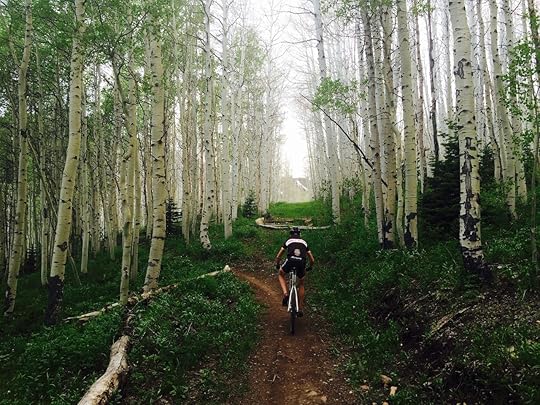
Photo: Kyle T Perry/Shutterstock
Park City’s biggest pull, beyond the bike park itself, is its close access to Salt Lake City International Airport just 40 minutes away. The other bonus is that you get two-in-one here now that Park City Mountain and Canyons Village have merged into one massive resort. On the Park City side, mountain biking happens off the PayDay express lift, leading you to 450 miles of trails both on the resort and in the surrounding backcountry. Be sure to hit the IMBA Epic Ride and get out on the trailhead first thing in the morning if the weather cooperates.
At Canyons Village, the Red Pine Gondola offers access to cross-country-style trails where you’ll actually do some real pedaling. This is a more mellow experience for riders not looking to fly over their handlebars on a downhill track.
Season dates: Daily lift service May 24-September 2; Thursday-Sunday lift service September 3-29
4. Angel Fire Bike Park — Angel Fire, New Mexico
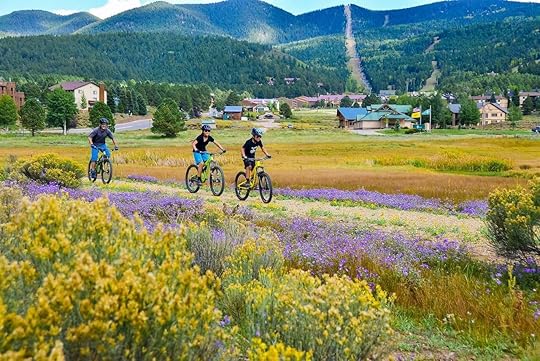
Photo: Angel Fire Resort/Facebook
Beyond Taos, a handful of New Mexico mountain towns have been making a big push to get their state the recognition it deserves in the outdoors community. Angel Fire is the latest example, having doubled the size of its bike park in recent years to become the largest in the Rocky Mountains. They now offer over 60 miles of dedicated trail among one of the most comprehensive on-mountain bike trail systems in North America. This is the place to head when you have a group with diverse interests and talents since it has jump lines and burns for freestyle riders; bumpy steeps for downhill enthusiasts; and three long, winding pushes that are perfect for beginners and families.
If you’re a fan of earning those turns, hit up the Angel Fire’s Enlightenment Trail, the best cross-country track of any mountain resort in the country, hands down. Plus, Angel Fire is the coolest name for a mountain town since Chamonix, so it might actually be worth picking up a t-shirt from the gift shop before heading home.
Season dates: Lift open Fri-Sun beginning May 24, daily lift service June 20-August 10, then back to Fri-Sun through October 20
5. Mont Saine-Anne — Beaupré, Quebec, Canada
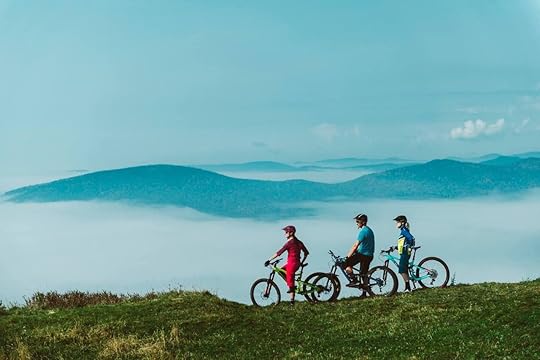
Photo: Mont-Sainte-Anne/Facebook
Eastern Canada isn’t top-of-mind for most mountain enthusiasts. Mont-Sainte-Anne is proof that it should be, particularly in the summer. Located just outside of Quebec City, the bike park is the best on the east coast purely because of its access. A ride up the gondola puts you atop 19 miles of downhill, with another 80 miles of cross-country trails on-mountain and adjacent.
Right at the base of the resort is the popular pump-track, where you can push around a bern-and-bump-filled circle to your heart’s content as a warm-up or cool-down after a day on the hill. Trails are cut into both sides of the ridge-shaped resort, offering expansive views of the St. Lawrence River to the east and Jacques Cartier National Park to the west, winding through thick meadows and dense forest across some of the flowiest terrain on the east coast. Downhill riders should be sure to hit The World Cup Trail, known in local parlance as Le Coup du Monde. On the endurance side, both L’Adorila and La Bouttaboutte will have you screaming ”Oui!” all the way back to the parking lot.
Season dates: Daily lift service May 25-October 14 for cross-country; Downhill daily service June 21-September 2, Friday-Sunday September 3-October 14 

More like this: How to plan a summer mountain bike trip to Andorra
The post The 5 best ski resorts in North America to go mountain biking this summer appeared first on Matador Network.

Best free things to do in SF

San Francisco may have some of the most expensive real estate in the world, but the California city is a surprisingly affordable place to spend a summer weekend — or even a week. The views are beautiful, and just walking around the city and taking them is a no-cost pleasure. But there are plenty of other very cool ways to savor SF’s stunning geography, unique history, and cultural treasures that cost nothing, or almost nothing. From hiking along cliffs within city limits to exploring where the hippie movement was born, here are 11 of our favorites.
1. Snap a photo in front of the Mission Murals.

Photo: Precita Eyes Muralists/Facebook
While it seems like big cities around the world are rushing to embrace street art and Instagrammable facades, these have been a fixture of SF’s Latinx Mission neighborhood for decades. You’ll see murals all over the neighborhood, but for an immersive street art experience, walk on Clarion Alley at 16th Street and Mission or on Balmy Street just off leafy 24th Street. The murals touch on everything from life in rural Central America to the current immigrant experience, with sometimes subtle and occasionally heavy-handed symbolism. The murals have been kept up by the Precita Eyes Muralists Association since 1977. After exploring the murals, grab a Mission-style burrito in the ‘hood where they were invented; Papalote and Pancho Villa’s massive burritos are pretty much lunch and dinner combined and cost less than $10.
2. Ascend the de Young Tower, then have a cup of coffee.

Photo: Checubus/Shutterstock
The de Young Museum is an architectural stunner, and the collections inside are inspiring. But adult tickets are $15 each. Skip the admission fee, but go inside anyway — it’s free to enter the lobby and a few other key zones. On your way inside, you’ll pass the Drawn Stone sculpture by Andy Goldsworthy. Head to the elevator lobby and check out the ethereal wire sculptures by celebrated local artists, Ruth Asawa. Then take the elevator up to the museum tower. When you exit, you’ll have views of Golden Gate Park, the Marin Headlands, and northwest San Francisco. Once you’re back down, walk to the de Young Cafe. Order a cup of coffee, or nothing at all, and walk out the glass doors to the sculpture garden. Walk inside the Three Gems dome by James Turrell, sit down, and ponder the tiny circle of sky you can see above. It’s a contemplative moment, and it’s free.
3. Hang out in Dolores Park.
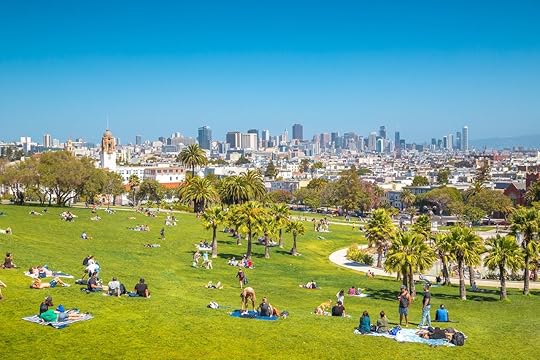
Photo: canadastock/Shutterstock
On a sunny weekend afternoon, Dolores Park is the place to be. It lies at the crossroads between the multicultural Mission neighborhood, family-oriented Noe Valley, and gay-friendly Castro District. Sloped as it is, it offers big vistas of downtown San Francisco. Take a walk around and you’ll find the dog-owners zone, the hipster area, the family fun place (made obvious by the play structures), the LGBTQ locale, and other less easily defined spots. You could opt for some pick-up basketball or head across the street to Bi-Rite Creamery, which probably invented salted caramel ice cream. The frozen treat is not actually free, but it’s worth every penny.
4. Explore the shops of Chinatown.
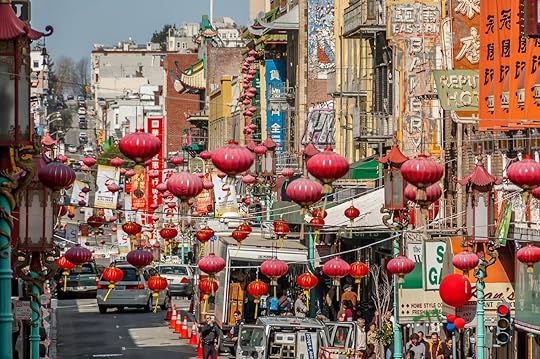
Photo: Jeff Whyte/Shutterstock
Most tourists cross the Chinatown’s Dragon Gate at Bush street and make their way up Grant Street. While Grant Street is certainly colorful and festooned in festive red lanterns, it’s not where local Chinese immigrants spend their time. Work your way over to Stockton Street, walking first through Waverly Place to take in the painting balconies and then to Ross Alley for Golden Gate Fortune Cookie Factory to see the flat cookies filled with fortunes and folded by hand. Once on Stockton Street, you’ll see Eastern pharmacies selling herbs and other unidentifiable items, stores selling imaginative paper goods that are burned at funerals, and markets hawking live seafood and unusual produce.
5. Walk in Crissy Field.
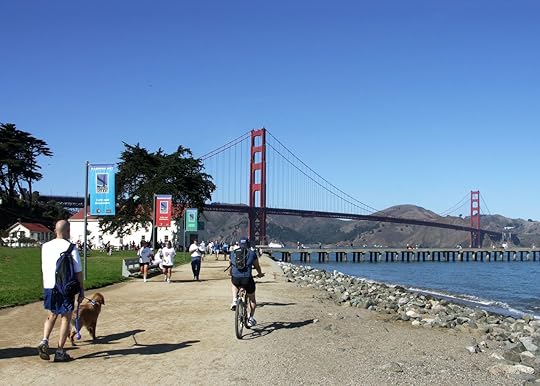
Photo: Lynn Watson/Shutterstock
For decades, this area at the mouth of the San Francisco Bay, a shuttered military airstrip, was best known as a take-off spot for windsurfers. After much work by the National Park Service and volunteers, Crissy Field reopened as a park in 2001, with an enclosed wetlands area and a three-mile path running alongside the bay. Offering non-stop vistas of the Golden Gate Bridge, the bay, and the SF skyline, Crissy Field instantly became a favored place for locals to walk or jog, or to take the kids on a weekend morning.
On your morning walk in Crissy Field, you could stop along the way at the free Greater Farallones National Marine Sanctuary, located in a historic white house and open Wednesday to Sunday, for information on the local sea life, or continue to the The Warming Hut Bookstore & Cafe for a latte. If you walk beyond the cafe, you’ll reach Fort Point, a sturdy brick 1850s structure erected to defend the bay. It’s open weekends, but even when it’s closed, it’s a fun spot to watch the intrepid surfers who ride the waves that wrap in under the Golden Gate Bridge. At the opposite end of Crissy Field is East Beach, where kite-surfers launch themselves into the choppy water of the bay once the afternoon winds pick up. A good walk beyond East Beach is the Wave Organ, a wacky structure that uses the movement of the waves, especially at high tide, to make music.
6. Hike in Lands End.
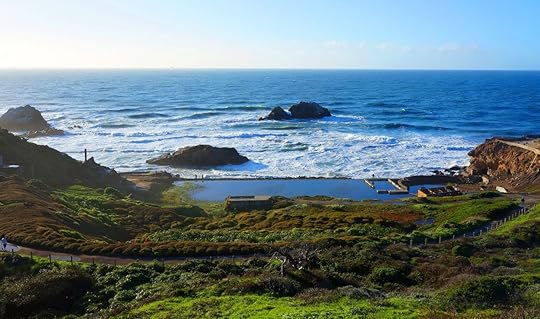
Photo: Aerial-motion/Shutterstock
You may not always think of hiking on your vacation, but we believe you should. In any case, a walk on Lands End will make you appreciate just how incredible the corner of the world is. You’ll take in the wild Pacific Ocean over a hundred feet below you, the golden hills of the Marin Headlands across the bay, and the Golden Gate Bridge from outside the bay — an angle that most tourists don’t see. You’ll observe graceful Monterey cypress trees on the Lincoln Park public golf course and maybe even spot surfers at a crazy spot below you called Dead Man’s. You can also walk to a labyrinth near the water or explore the remnants of the Sutro Baths, built in 1894 to hold up to 10,000 people at a time. Stop in for info and a not-free coffee at the Visitor Center.
7. Check out the boats at the Hyde Street Pier.

Photo: travelview/Shutterstock
Most of Fisherman’s Wharf is a sea of tourist t-shirt shops. But head to the far end of the wharf near Ghirardelli Square and walk onto the Hyde Street Pier. It’s free to stroll on the pier and only a few dollars to enter the historic boats. The majestic Balclutha, an 1886 square-rigger with massive sails, is out for repairs but is expected back soon. The antique cars on the 1890 steam ferryboat Eureka and even the 112-year-old steam tugboat are all fascinating, and they give you a sense of how important SF’s waterside location has been to its history.
While on the pier, look west at the body of water in front of Aquatic Park. You’re likely to see people swimming without wetsuits in the bay’s 54-degree water. Those hardy nuts are part of the Dolphin Club, whose members have been braving these waters since 1877. If you’re still curious about SF’s maritime history, head across the street from the pier into the San Francisco Maritime Visitor Center. You’ll find a massive lighthouse bulb, replicas of boats, and other cool exhibits — all for free.
8. Window shop in Haight-Ashbury.
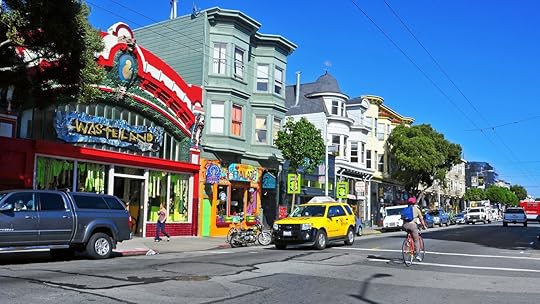
Photo: nito/Shutterstock
The epicenter of the 1967 Summer of Love and the nation’s anti-war hippie movement was in San Francisco, in this very neighborhood. Members of Jefferson Airplane and The Grateful Dead, as well as Janis Joplin, were among the musicians who called these streets home. Today the area is better known for its head shops, its Amoeba Music record store, and wacky boutiques that are must-stops before the annual Burning Man Festival in Nevada. Window shopping is pretty satisfying, but you may want to actually buy something on Haight Street. A few newer stores are ludicrously overpriced, but you could just as easily find a great, new disco dress for $14 at the shop next door. The secondhand shopping options are enviable. Stop for a snack at StreetTaco or just pick up at ice cream at the Ben & Jerry’s on the corner of Haight and Ashbury streets.
9. Stroll the Embarcadero and wander the Ferry Building.

Photo: telesniuk/Shutterstock
Stretching from AT&T Park to Fisherman’s Wharf, the Embarcadero Promenade is a great place for a stroll, with some big public art — include an enormous Cupid’s being shot into the ground — closer towards the ballpark. If you want to walk a smaller length of it, though, stay near the San Francisco Ferry Building. Along the promenade, you’ll see metal plaques in the sidewalk, as well as 13-foot-tall columns, featuring photographs, poems, and stories about San Francisco. Then walk into the Ferry Building, the epicenter of SF’s organic, sustainable, and delicious food scene. You’ll see shops specializing in mushrooms, olive oils, award-winning cheese, or chocolate, to name a few, as well as a less-crowded outpost of the famous ice cream shop Humphry Slocombe.
If it’s Saturday morning, the sprawling Ferry Plaza Farmers Market is a great place for free samples or fruit, bread, and other tasty bites — or even to buy an excellent breakfast from a food cart. A smaller version of the Saturday market occurs mid-day on Tuesdays and Thursdays in front of the Ferry Building. All this food will make you hungry. To keep things in your budget but stick to the area’s sustainable and tasty food ethos, get a sustainable (or Impossible) burger or fish tacos at Gotts on the west side of the Ferry Building, and enjoy it at a picnic table outside.
10. Climb a lot of stairs through a secret garden, then look at socialist art.

Photo: ChameleonsEye/Shutterstock
You could drive right up to Coit Tower or take a Muni, as locals call SF buses. (The Muni isn’t free, but it’s $2.35 if you pay on the spot.) Or you could take the really hard way and walk up the Filbert on Greenwich Steps on Telegraph Hill. These parallel stairs are steep, but they climb through beautiful private gardens filled with colorful flowers and birds, and some of San Francisco’s most expensive real estate.
Once at the top, choose to pay $9 (for adult non-residents) to ride the elevator up Coit Tower, or save the money and just take in the awesome city views from the parking lot instead. Whichever you choose, be sure to still step inside Coit Tower to check out the murals inside the base of the tower. In good socialist fashion, they’re free to visit.
The murals were painted in 1933 by dozens of students of Diego Rivero, one of Mexico’s most celebrated artists and onetime husband of Frida Kahlo. They were commissioned by the Public Works of Art Project, one of FDR’s New Deal endeavors to get people back to work after the Great Depression. The paintings depict farmers, workers, fishermen, and ordinary citizens in SF and the Bay Area. The whole thing was decried by conservative idealogues who saw Communism everywhere they looked — making the murals a fascinating look at that charged political era.
If you want to see a mural by Diego Rivera himself, head to the next knoll over: Russian Hill. You can walk into the courtyard of the San Francisco Art Institute and enter the first gallery on your left. You’ll see a huge mural celebrating the worker, with thinly veiled Soviet imagery. Then head to the back of the institute for yet another sweeping view of the waterfront.
11. Watch a free summer concert or play.
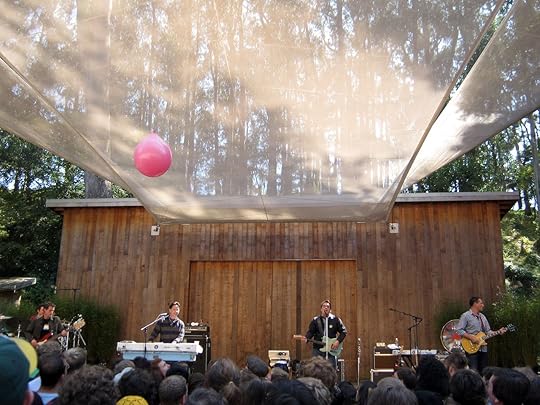
Photo: Eric Broder Van Dyke/Shutterstock
In the summer, you’ll find free music and performing arts around the city. The Stern Grove Festival features free concerts on Sundays from June to August. The setting in the trees is lovely, but be sure to bring a blanket to sit on and a warm jacket — as this part of SF can get foggy and cool at that time of year. The Yerba Buena Gardens Festival, in the downtown SoMa neighborhood, runs from May to October and features musical and theatrical acts from around the world. You can also catch free Shakespeare in the Park performances in two SF locations in September. 

More like this: The 12 best budget destinations of 2019
The post The best free (and almost free) things to do in San Francisco appeared first on Matador Network.

Polish Instagrammer smashes nose off

In this modern age, you never know who’s watching. A Polish teenager and Instagrammer recently found the whole world watching her, though not in the way she’d hoped. An Instagram story posted by user @advvx showed a teenage girl, presumed to be user @JuliaSlonskaa, taking a hammer to the nose of a 200-year-old statue in the capital city of Warsaw. The camera operator laughs as the nose of the statue is destroyed by the hammer.
The Instagram story depicting the incident has since been removed, but video of the incident made its way to YouTube and comments condemning the act began streaming in immediately.
Slonskaa has since apologized for her actions, issuing the following words of remorse: “What happened yesterday should not have taken place at all and seriously, I regret that I did it. I’m so stupid. I will not say what was driving me, why I did it, because it is more of a private affair, but I really wanted to apologize to everyone.”
Whether or not legal action is taken by local authorities, this foolish act has already resulted in consequences for Slonskaa, an 18-year-old. She had recently been hired by mBank, a Polish bank, to take part in an advertising campaign, but was dropped from the project following the incident. A spokesperson for the bank issued the following statement to Metro: “We definitely do not support such behaviour, and the appropriate services should deal with it. As for the responsibility for what the actress does many weeks after the completed photos are taken — we cannot be responsible for the individual choices of such people.” 
H/T: Insider

More like this: Instagram is hiding likes, and influencers are panicking
The post Teen Instagrammer shamed after smashing nose of 200-year-old statue in Poland appeared first on Matador Network.

Best US cities for black travelers

The United States and black travelers have a complex history. The relationship between this country and African American travelers hasn’t always been easy. During the era of Jim Crow laws, black Americans relied on a handbook guide The Negro Motorist Green Book, so they planned trips around the country only visiting places deemed as safe spaces. The guide book included hotels, restaurants, swimming clubs, and more that would openly welcome black travelers.
Though that dark chapter of our history has passed, the woes of being a black traveler haven’t completely disappeared. There is still much anxiety felt around being a black person and visiting a new state for the first time. As black travelers, we often turn to the black travel movement happening online in search of places that have already been vetted by others in the black travel community. The online black travel movement is our modern day Green Book.
If you’re a black traveler looking for your next US city worth exploring and to connect with other black communities while you’re there, check out this list of the six best US travel destinations to add to your list for 2019.
1. Atlanta, Georgia
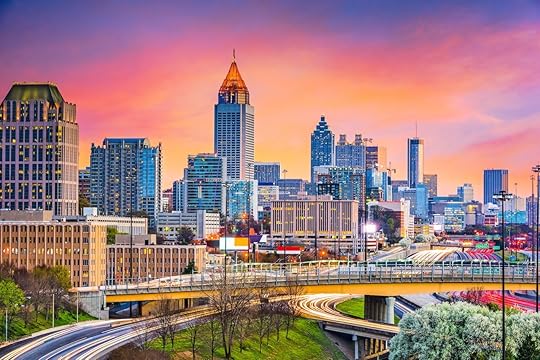
Photo: Sean Pavone/Shutterstock
Atlanta has long been a go-to for black folks looking to travel to a place where we can find each other. The southern city continues to evolve as a music hub and a place where black businesses are thriving. Whether for the food, nightlife, or history, a visit to Atlanta is crucial for black travelers wanting to experience the roots of black America.
Nightlife is a big part of Atlanta’s draw. During your trip be sure to check out these black-owned lounges: Negril Village, The Cigar Bar, and M Bar Atlanta. By the early 2000s, trap music was birthed in Atlanta, and it has since inspired an entire era of rap music. Trap music is so popular that Atlanta-born rapper T.I. opened a trap music museum celebrating the culture of the Georgia city. Artists like Jermaine Dupri, T.I., Outkast, and Usher, all hail from ATL.
Atlanta has more than just famous musicians, however. The city was at the heart of the civil rights movement and was home to revolutionaries like Martin Luther King Jr. and John Lewis. Black travelers looking to learn more about the history of civil rights in the city should take a walking tour through the Martin Luther King Jr. district. The suggested route will take you through the resting place of Martin Luther King Jr. and Coretta Scott King, Freedom Hall, Dr. King’s Birth Home, and more monumental sites.
View this post on InstagramA post shared by Heather B (@_thegirlwithcurls) on Mar 21, 2018 at 12:28pm PDT
Heather Balenger is a black travel blogger living in Atlanta. When speaking with her about some of the black-owned restaurants black travelers should visit, she mentioned the city’s array of southern comfort food. Balenger suggests grabbing a table at Richard’s Southern Fried Chicken, a staple in the city. Richard’s serves up an innovative take on traditional Vietnamese pho, and it’s called collard green pho. The dish features fried chicken and collard green noodles — an Atlanta delicacy indeed.
2. Philadelphia, Pennsylvania

Photo: Life Atlas Photography/Shutterstock
Philadelphia is known for a lot of things: sports, history, and music among them. While the city is a big part of America’s history, it is also the pulse of some of the country’s most important black leaders and movements. Black travelers have to visit the liberty city in 2019 because there’s so much to explore.
Abena Bempah, travel blogger and Philadelphian, says, “The city is a must for black travelers intrigued by the origins of the nation and blackness in America.” Philadelphia gave us musical icons like Teddy Pendergrass, Pattie Labelle, The Roots, Meek Mill, and so many more. These artists have collectively shaped soul, neo-soul, and hip hop music — which has inevitably become synonymous with US culture itself. Bempah explains that you can’t visit the city without experiencing the sounds of Philadelphia’s up and coming artists.
View this post on InstagramA post shared by Abena | Impact + Travel (@beautifully.flawed.one) on May 2, 2019 at 5:11am PDT
For lovers of jazz music add black-owned South Jazz Kitchen to your list. They serve up a multi-course dinner with New Orleans-inspired dishes and accompanying live jazz performance. Besides food, Philadelphia is the home to a lot of art. The African American Museum has a large collection of photographs, paintings, and even an interactive exhibit showcasing the stories of black people in this country. In a less traditional sense, you can find street art painted all over the city. In the 1960s Darryl McCray known by his tagging name, Cornbread, is known to have started the graffiti movement in Philadelphia. Graffiti as a form of expression spread to New York City shortly after and is now practiced worldwide. If you want to see Philly’s best street art, Abena recommends heading to the Spring Arts district where some of the city’s best murals are on display.
3. Detroit, Michigan

Photo: f11photo/Shutterstock
Famously known as the Motor City, Detroit has long been a prominent city for black culture. In its heyday, the Midwest city rose to fame for its innovation in the automobile and music industries. Specifically, Detroit birthed Stevie Wonder, Diana Ross, and Motown itself. Now, Detroit is still a music-loving city packed with festivals, plenty of restaurants, and a whole lot of black history.
Visiting Detroit at any time of year is sure to be special, but the city really comes alive in the summer. In conversation with Jessica Nabongo, world traveler and writer, the Detroit native explained that her hometown has a lot of history for visitors to explore. From the city’s African American history exhibited at the Charles H. Wright Museum to the many exciting music festivals, Detroit should be at the top of every black traveler’s list for 2019.
View this post on Instagram
Best Scottish food

Rugged Scotland is known for its foreboding and eerie brown moors, stark mountains with a handsome stag perched proudly atop, roaring fires, grey stone buildings, misty harbors, and whisky. What deserves more attention is the region’s food.
The proud inhabitants of Scotland have rich culinary traditions which, to the uninitiated, may initially appear overly preoccupied with the lining of sheep stomach and the various gastronomic utilities of blood. Admittedly, the names of the dishes don’t sound too promising either, but the Scots certainly do deliver on flavor. There’s a beguiling array of waistline-enhancing comfort foods to be discovered, perfect for gobbling up when curled in front of a fire, whisky in hand.
These are the traditional Scottish dishes you need to try.
1. Haggis with neeps and tatties

Photo: stockcreations/Shutterstock
No dish is more Scottish, yet it’s challenging to describe haggis in a truly appetizing way. It’s made with all the bits of a sheep, combined with spices and oats, boiled in the sheep’s stomach (though today, artificial casing is often used) and served as a crumbly pudding. You’ll either love it or hate it. It’s usually served alongside mashed neeps and tatties, which is how you’ll find turnips and potatoes referred to on any good Scottish pub menu.
The dish is eaten with reckless abandon by Scots on Burns Night, a huge celebration of the life and poetry of Robert Burns (of “Auld Lang Syne” fame) who loved haggis, and wrote a poem about it. Arcade Haggis and Whisky House in Edinburgh comes highly recommended by locals for its take on haggis, neeps, and tatties.
2. Cullen skink

Photo: Fanfo/Shutterstock
Quell any preposterous images that spring to mind after reading the name of this dish. Cullen skink is a smoky Scottish version of creamy fish chowder that’s traditionally made with smoked haddock and potatoes. This hearty soup originates from the small fishing town of Cullen on the northeast coast of Scotland. Fabulously, there is an annual Cullen Skink World Championship, which in 2018 proclaimed Lily’s Kitchen Cafe in Cullen itself to have the finest.
3. Black pudding

Photo: Joerg Beuge/Shutterstock
The production of black pudding in Scotland is a tradition hundreds of years old. Usually, it’s a mix of oatmeal, pig’s blood (but sometimes blood from a sheep or cow), suet (lard), onion, and spices. Although hotly contested, many Scots claim that the black pudding from Stornoway on the Isle of Lewis is the most delicious. Fortunately, Stornoway Black Pudding is immensely popular, so you won’t need to travel to the island to taste it. Any hotel will include black pudding in its traditional “fry up” breakfast, along with eggs, sausage, tomato, beans, and tattie scone.
4. Fish supper

Photo: Juraj Kamenicky/Shutterstock
Get yersel doon the chippy fer a fish supper (that’s Scottish for “go down to the local takeout shop to get fish and chips for dinner”). This ultimate comfort meal involves fish (often haddock) battered and deep-fried until crispy and served alongside deep-fried, fat French fries. The fries are to be consumed with salt, but depending on where you are in Scotland, perhaps also with vinegar or sauce. This meal is best washed down with a can of sugary Irn Bru, a vivid orange Scottish soda. The Bay Fish and Chips in Stonehaven on the east coast of Scotland has received much acclaim for its fish supper. For the traditional, queue alongside the locals at Merchant Chippy in Glasgow.
5. Kedgeree

Photo: Food Via Lenses/Shutterstock
Traditionally eaten for breakfast, kedgeree is a spiced rice dish containing flaked fish (often smoked haddock), cream or butter, parsley, and hard-boiled egg. The Anglo-Indian dish is thought to have been popularized in Scotland in the Victorian era. Nowadays, perhaps because of its historical place on a rich Victorian breakfast spread, it tends to feature on the breakfast menus of upmarket hotels, such as The Balmoral in Edinburgh and Kinloch Lodge on the Isle of Skye.
6. Porridge

Photo: Monkey Business Images/Shutterstock
Oats have been a staple crop in Scotland for generations, and feature heavily in many traditional dishes. Porridge is one such classic example and can be found on just about any breakfast menu in Scotland. While it was historically made with just oats, water, and salt, you’ll now discover multiple sweet and savory adaptations. A decadent modern favorite includes the addition of cream, sugar, and the ubiquitous cheeky wee dram of whisky. So integral is this dish to Scottish culture that the local tourism board has created the Porridge Grand Tour so that everyone can taste the best on offer in their locality.
7. Cranachan

Photo: NoirChocolate/Shutterstock
Oats make another appearance in this dessert concoction, delectably layered alongside raspberries, honey, cream, and, of course, whisky. Reminiscent of England’s Eton Mess or perhaps a berry trifle, this variation is undeniably Scottish. Locals will tell you that Scottish raspberries are the best in the world when in season in June, which is, unsurprisingly, the best time to be eating cranachan. You’re likely to find it on many dessert menus, and Edinburgh’s Whiski Rooms is a great starting point.
8. Clootie dumpling

Photo: Barbara MacDonald/Shutterstock
This dessert’s name is derived from the cooking method or boiling a dumpling inside a clootie, which is a piece of cloth or rag. Similar in taste to Christmas pudding, the clootie dumpling usually contains dried fruit, spices, and suet, and is served warm with a good dollop of custard or clotted cream. We highly recommend visiting Cairngorms National Park to work up an appetite by hiking or skiing, and then indulging in a slice of the Speyside Heather Centre’s famous clootie dumpling. 

More like this: The 5 most epic whisky experiences in Scotland
The post 8 gut-busting traditional dishes from Scotland to add to your bucket list appeared first on Matador Network.

Traditional Icelandic dishes to eat

Iceland may be known as the land of fire and ice, but when it comes to food, it’s the land of surf and turf. It’s a country of fishermen and farmers, and fresh fish and grass-fed lamb have been staples in Icelandic kitchens for centuries. The best known dishes share the hallmarks of Nordic cuisine: fresh, high-quality ingredients prepared simply. All of the classic dishes are shaped by Iceland’s isolation, weather, and culture.
A stopover in Reykjavik is the perfect way to try creative interpretations of these traditional dishes. This is what to try, as well as a few places to try them at.
1. Kjötsúpa

Photo: from my point of view/Shutterstock
On a cold rainy day, nothing is more satisfying than a bowl of hearty kjötsúpa, which is lamb soup. Every Icelandic household has its own version, but the main ingredients are lamb with the bone still in, onion, cabbage, carrots, rutabaga, leeks, and potatoes.
Where: A newcomer on the scene, Icelandic Street Food has made a name for itself with its version of this classic dish served in bread bowls. Even better, the restaurant offers free refills.
2. Hjónabandssaela
Hjónabandssaela translates to “happy marriage cake,” and is a tart made from rhubarb jam, oats, and brown sugar. The story behind the name is that the cake, just like a marriage, gets better over time. Rhubarb is commonly found in Icelandic desserts and grows easily in gardens and even in the wild.
Where: Try it at Bernhoftsbakari, one of the oldest bakeries in Reykjavik.
3. Plokkfiskur

Photo: Fanfo/Shutterstock
Plokkfiskur, Icelandic fish stew, started out as a creative way to use leftover fish, but is now a classic comfort food. Cod, haddock, or halibut is mashed together with boiled potatoes, butter, and milk, and served with a side of dark rye bread and dollops of Icelandic butter.
Where: Salka Valka is a good place to drop by for lunch and try its traditional fish stew.
4. Leg of lamb
Slow roasted leg of lamb served with caramelized potatoes and pickled red cabbage is a classic Sunday dinner. The potatoes are boiled first then fried with butter and sugar, and the red cabbage is shredded and then flash-pickled.
Where: Matur og Drykkur, a restaurant located in an old fish factory, bases its menu on Icelandic recipes dating back to the 1800s. It doesn’t get much more traditional than that.
5. Lobster soup

Photo: Olana22/Shutterstock
The key to this soup is the stock, which is made from boiling the shells of langoustine with peppers, celery, and onions. Chunks of the langoustine and cream are added in afterward for a rich taste.
Where: Sægreifinn, located in the old harbor area of Reykjavik, is known for its world-famous lobster soup and always has lines of people waiting for it.
6. Kleinur
Kleinur are Icelandic doughnuts with a twisted shape and a slight hint of cardamom. They’re deep-fried in tallow, and best paired with a strong cup of coffee. The plain versions are a typical breakfast item that can be purchased at bakeries or grocery stores, along with chocolate-dipped versions.
Where: Grab this treat at Sandholt Bakery, which opens at 7:00 AM every day, earlier than most shops in Reykjavik.
7. Salted cod and harðfiskur

Photo: Ursula Ferrara/Shutterstock
Icelanders have traditionally needed to preserve a lot of food, and drying and salting fish is one effective method. Before it can be cooked, salted cod has to be soaked in water for days. The fish is then boiled and served either with potatoes or Portuguese style with tomatoes and olives.
Where: Systir serves up its salted cod with cabbage and loads of butter. Dried cod is also a favorite snack called harðfiskur, which is eaten with butter.
8. Ice cream
It doesn’t matter what time of year, how cold it is outside, or what time of day, ice cream is always a popular option in Iceland. The ice cream stores are open late and it’s not uncommon to see people in their pajamas waiting on line for ice cream at night.
Where: Valdis is the go-to spot in the trendy neighborhood of Grandi. If you really want to be Icelandic, try the licorice flavor.
9. Skyr cake

Photo: Teo Wei Keong/Shutterstock
Skyr is a thick, tart dairy product similar to Greek yogurt. It comes in a lot of flavors and is easily found in grocery stores throughout Iceland. It’s put on top of a graham cracker crust to make skyr cake, which tastes like cheesecake, only without the guilt since skyr is naturally low in fat. Sometimes fresh blueberries are sprinkled on top.
Where: Café Loki, across from the famous Hallgrimskirkja church, is one of the oldest traditional restaurants and a good place to sample the cake. 

More like this: The 9 most touristy places in Iceland – and where to go instead
The post 9 traditional Icelandic dishes to eat in Reykjavik appeared first on Matador Network.

What is a mental wellness retreat

We live in the age of wellness: wellness programs at work, wellness influencers, and wellness foods that were probably just as good for you before being labeled well. And it’s big business. Just look at all of the CBD products promising overall wellness that have yet to be scientifically studied. Or, I don’t know, Goop. According to the Global Wellness Institute, wellness is a more than $3.7 trillion market and the biggest future trend is mental wellness.
Whether you blame it on toxic living environments or our consumerist need to buy anything that promises to fill the holes in our unsatisfied lives, wellness is an unavoidable topic in the year of our internet overlords 2019. Which is why, for the subset of people who can afford it, escaping to a wellness retreat is the ultimate vacation (and Instagram post).
The quest for wellness is what brought me to Horse Shoe Farm near Asheville, North Carolina, one afternoon in early April. Specifically, it was a quest to see how much good a wellness trip could do for a food-and-drink-focused writer whose health could best be described as not not well. I did, after all, start the sojourn with a lukewarm Wendy’s chicken sandwich at the all-too-horrid Newark International Airport.

Photo: Nickolaus Hines
Less than five hours after my flight from New York City landed, I was in Horse Shoe Farm’s chicken and goat pen with two newborn goats that looked like they might trip on their umbilical cords with every attempt at a step toward their mom, Bobby Marley. If wellness is forgetting a growing pile of deadlines and a bottomless pit of emails, it did not take long for me to find it.
The science behind wellness retreats
There’s a class of people very familiar with wellness. You can usually pick these people out because they mention wellness shortly after meeting them. Then there are the normies who chug along, drowning in the anxieties of modern life, maybe not even knowing they are unwell. There’s a middle ground in there somewhere, but you’d be hard pressed to find it in many of the bustling cities in the US.
A growing number of wellness retreats and wellness-focused destinations are here to fix the ailments of the latter two categories of people, as well as bolster the wellness cred of the former. They’re idyllic, relaxing, and usually surrounded by beautiful nature. Horse Shoe Farm is one of these. It’s a short (and cheap, with Allegiant flights at the time of writing going for around $100) flight away from the Big Apple.

Photo: Nickolaus Hines

Photo: Nickolaus Hines
Horse Shoe Farm is mental health-focused yet also very much a working farm — one guest’s dog managed to get ahold of a chicken named Tenders, and Tenders was turned into soup. It’s run by Jordan Turchin, who grew up in Miami and worked in the film industry in New York and Los Angeles. These days, the 33-year-old is most likely to be seen taking care of farm duties with his hair tied back and wearing his crystal necklace.
He’s helped co-workers bond and couples escape. Along with taking care of the goats, chickens, and ducks, he’ll set up yoga classes in the meditation room and massages in the converted horse stables. He’ll help you out at the morning juice bar and point the way to the best nearby hikes. Or not. The point of Horse Shoe Farm is to interpret wellness in a way that makes you actually well rather than stressed about ticking off some 12-step plan. When asked for an example of success, Turchin recalled a New York couple that came phones in hand, but before long he “could just see [them] melting back to the earth.”
“The people who are plugged in are really plugged in,” he told me as we talked about life in New York. “But then you release and you’re like, ‘did I need that?’”
An escape to a wellness farm certainly made me question why I needed my phone other than to take photos of baby goats. The science behind the feelings, though, is sparse. One of the first published studies on wellness retreats made it into the Journal of Alternative and Complimentary Medicine in 2017. It had the telling and wordy title, “Do Wellness Tourists Get Well? An Observational Study of Multiple Dimensions of Health and Well-Being After a Week-Long Retreat.” The study concluded that, while it had its limitations in terms of participant size, “retreat experiences can lead to substantial improvements in multiple dimensions of health and well-being that are maintained for 6 weeks.”
“When on a wellness retreat, it is fairly easy to become engaged in healthy mindset patterns and routines simply because the retreat staff provide the necessary support and structure,” said Dr. Carla Marie Manly, a clinical psychologist in California. “By minimizing or eliminating contact with daily stressors (e.g., technology, work, etc.), offering healthy daily schedules, supplying wellness-oriented activities, and preparing wholesome foods, the retreat offers the ‘ideal’ environment for wellness.”
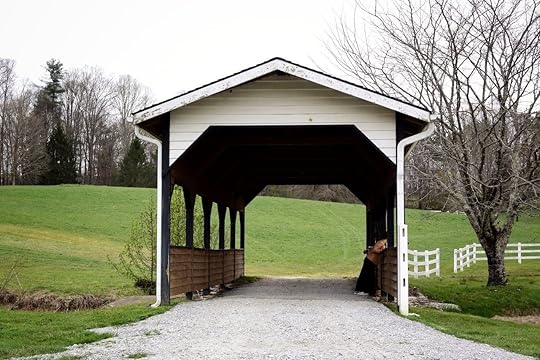
Photo: Nickolaus Hines

Photo: Nickolaus Hines
Retreats give people an excuse to disconnect, as well as all the tools to be present that aren’t available in normal day to day life.
“This is the time when you learn how to start your day with meditation, yoga, running or journaling, as a few examples,” said Dr. Michele Reed, a family physician who runs a wellness retreat in Jamaica. “When you are totally disconnected you are able to focus on you and no one else and their issues.”
Being disconnected, a crucial part of most wellness retreats, has a much better track record for improved mental health than general wellness.
“When a person invites technology into the home, there’s no stop button on what data is coming in. Wellness retreats provide exactly this,” Dr. Kate Cummins, a California psychologist, said. “They disconnect individuals from stimulus overload by creating a safe space that is protected and valued on being rather than doing. Performance and goal directed behavior is let go of during wellness retreats so that a person can connect to the here and now.”
Excessive phone use has been linked to depression, sleeplessness, and stress. Phones are inextricably linked to modern work, yet also have been shown to decrease productivity, thereby opening the door for more work-related stress. It’s this stress, in part, that drove Horse Shoe Farm into existence in the first place.
Nature-made wellness
Turchin went to University of Southern California and New York University, and regularly traveled between New York, Los Angeles, and Miami. At 20, he was diagnosed with an autoimmune disorder and prescribed medication. He started researching where his food comes from and ways to find more balance in his life. When his wife, Rachel, became pregnant in 2017, they went back to family in Miami. His dad, John, told him about a farm he owned up near Asheville. By the summer of 2018, Horse Shoe Farm opened for business as an event venue and luxury farm, and the first group was a Kosher family of 50.

Photo: Horse Shoe Farm
Today, the farm has an extended suite of options to fix guests’ mental state. People can pick and choose like it’s the Chipotle of wellness retreats. Juice your own juice for breakfast, but don’t feel like you need to do a full-on juice cleanse. Walk the property’s 85 acres while it’s still covered by mist from the Blue Ridge Mountains, or just sleep in. Bike, play ping-pong in the game room, fish, and paddleboard, or just post up in the meditation room at the top of a converted grain silo and breathe.
Things happen for a reason here, Turchin told me multiple times, and you take advantage and roll with it.
“I’m the opposite of believing in anything culty or pushing someone to do something or go in a certain direction,” he said.
In the spirit of wellness and taking advantage of what’s available, I signed up for the morning yoga class in the meditation room with my girlfriend, Heather. This is despite the fact that I can’t touch my toes and the closest thing I’ve done to yoga was once attempting to follow a YouTube video.
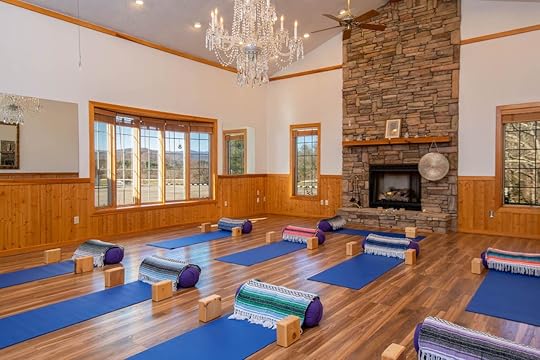
Photo: Horse Shoe Farm
Still, the instructor, Amber, was one of those high on life people who make it seem okay to try. A fire behind her heated the room and songs about breathing in and out played over the sound system. She laughed while talking to us a little about herself, then encouraged us to do the same. This should be easy enough, I thought from my corner in the back. Two-thirds of the way through and one Amber-assisted move later, my thoughts mostly centered on how I didn’t think I was supposed to be sweating that much during a basic yoga session.
The family style dinner the night before, and the post-dinner glass of wine by the fire, was more my speed. Though it probably didn’t help with the morning yoga, it was a nice reminder that the point of a wellness retreat is to do what makes you happy. Mental wellness doesn’t have to be about deprivation, other than the deprivation of all the screens causing you stress. As Turchin put it, “If you come here and you’re a vegetarian or vegan, great. If you want to eat meat and have a drink, you can.”
Meat and drink can lead to interactions you wouldn’t have had otherwise, after all. Without that fireside wine, John wouldn’t have had a chance to point out the spot toward the French Broad River where people kept seeing a ghost in a top hat. We also would’ve missed out on learning about the work Turchin’s done with healers to clear out the bad energy on the land, which has evidence of both Native American and Civil War activity.
Human interactions like these are rare in New York, or at least, you’re rarely in a welcoming mood to embrace them. In the safe space created by Horse Shoe Farm, conversations are calming and connections come easy. It made me feel that maybe strangers can get together and talk without it veering into a divisive garbage fire of debate. A feeling, I thought at the time, that I’d forget as soon as I got back on the internet.
The long-term benefits of wellness retreats

Photo: Nickolaus Hines
While there aren’t many studies out there about how our mental state resets after a retreat, from an expert perspective, the long-term effect doesn’t look promising.
“If the concepts are not embraced and internalized, the benefits of the wellness retreat may slowly fade within the first few days or weeks after returning to regular patterns,” Manly said. “And, after three months, the benefits may have been forgotten and all but erased from the psyche. It is for this reason that many wellness retreat aficionados find themselves hankering for another retreat several months later.”
Longer stays generally lead to longer results. “After 21 days, whatever you have learned and practiced are more likely to have become a habit,” Reed said.
To get anything long-term out of my wellness trip, I knew I needed to learn something that could stick with me — something like meditation.

Photo: Horse Shoe Farm
Near the main building on the farm, a former grain silo is now an interactive meditation silo. A steep winding staircase leads to the top, and the walls are lined with handwritten inspirational quotes written by unnamed passersby, large initials the only indication of who left what. At the top sits a small sand garden surrounded by gemstones, a sitting area, and a wooden human statue the size of a tween. An instructional book helps those new to mindfulness find their way, which means it’ll tell you what you’re supposed to do with a sand garden.
The view from the top is enough to take your breath away, especially at sunset. The entire grounds are laid out in front of you, and, depending on your eyesight, you can see up to the edge of the mountains and over the goats, chickens, and ducks in the animal pen.
Inside, it’s easy to get lost among the sayings written on the walls. Most veer closer to something saved on someone’s Pinterest board than anything original. I found myself wondering more than once how many people pulled out their phone to find the perfect quote. A version of “Not all those who wander are lost” makes more than a couple of appearances, as does “Namaste” and the peace sign. Bible quotes have more than their fair share of space, and if you look at the windowsill after observing the rooster outside you’ll see, “Whether you believe it’s positive or negative, you are right.”
But what’s said doesn’t really matter, because the point of the silo is to look inside yourself, not inside the silo. I don’t add my two cents of Pinterest quotes. I do leave with a self note to take more time in peaceful places.
So are wellness retreats worth it?

Photo: Horse Shoe Farm
“The truth is, a person has to believe in something in order for it to ‘work,’” Cummins said. She compared it to team sports and believing in winning. “We are what we believe. If someone doesn’t believe that a wellness retreat will work, he or she is probably resistant to letting go of perceived control of life. With a little bit of time in the space of a wellness retreat, even if the person doesn’t fully believe in the practice or lessons provided, he or she is still getting a break and rest from stress in their day to day functioning, which, by product of the decision to take time away from stress, creates space for the wellness retreat to ‘work’ in his or her life regardless of the belief going in.”
It also takes work after the retreat ends to keep the good vibes going.
“It’s much like the post-care required after a visit to the dentist’s office—if you don’t continue to maintain your teeth with good daily care (like flossing and brushing), you won’t find optimal benefits,” Manly said. “In the same way, the practices and self-care strategies offered in the wellness retreat must be put into daily practice in order to experience lasting and ongoing benefits.”
I admittedly could have used this advice before getting to the farm. I travel the US and abroad about once a month, and getting away from it all doesn’t feel that difficult on the surface. It’s a little more complicated when I accept that I’m also very much addicted to work, my phone, email, and social media. I disconnected as much as possible on the farm, but it wasn’t until my last day that I noticed how much a wellness retreat can really reset a person.
After our (sweaty, why so sweaty?) yoga session, my girlfriend and I sat by the French Broad River with a fishing pole, killing time before a scheduled massage. I hate massages, she loves them. The only massage I’ve enjoyed came exactly one hour and 15 minutes after eating a strong edible. Yet both of us were on the massage schedule at Horse Shoe Farm.

Photo: Horse Shoe Farm
Walking toward the stables, I thought about Turchin saying everything at the farm falls into place and happens as it should. Go with the flow — that’s how his family’s eclectic art got to the farm, and how he’s learned how to run a farm bit by bit. I admitted to Heather that I really did not want a message.
When we arrived, there was only one masseuse. She looked at me and asked if I was the one getting the massage, unaware that there were supposed to be two. She offered to do one and then the other, but this was, to me, a clear sign of what Turchin was talking about. I gladly passed my time to Heather, grabbed a book, and read in the sunlight with the birds chirping and baby goats bleating in the background. This was the reset I needed.
The best escapes let you choose your own wellness adventure to learn from. I found my place of mental wellness, and it won’t be the last time I seek it out. 

More like this: How to take care of your mental health while traveling
The post What it’s really like to go on a mental wellness retreat appeared first on Matador Network.

Matador Network's Blog
- Matador Network's profile
- 6 followers



